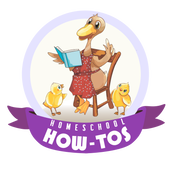Our Zoom-Type course works for people of all ages ("4 to 94"). Burt wrote: "I'm a middle aged adult who is changing professions. One of my job requirements is to be proficient at typing (at a fairly quick pace) without looking at the keyboard. Will your zoom type program adequately prepare & teach me how to do this?" The following was our response.
Picture a truck that has been driven down a dirt lane for decades -- in its accustomed ruts. To get it onto a new plane takes focused effort and consistency. Zoom-Type, above all typing programs, is a good tool for pulling a hunting-and-pecking typer into a person who uses all 10 fingers, each assigned to its respective keys.
Picture a truck that has been driven down a dirt lane for decades -- in its accustomed ruts. To get it onto a new plane takes focused effort and consistency. Zoom-Type, above all typing programs, is a good tool for pulling a hunting-and-pecking typer into a person who uses all 10 fingers, each assigned to its respective keys.
There are only two skills in touch-typing: 1) to have your fingers tapping the respective keys and 2) to have your brain know what key to use for each letter without you consciously thinking of it. Zoom-Type accomplishes this through using the picture side of the brain, and through isolating the typing from all the other bells and whistles of a 21st century keyboard.
The pattern of our typing course is spaced repetition, in short practice sessions. Each session takes about 5 minutes. Ideally, you will do a session early in the morning, one at mid-morning, one at around lunchtime, one in the afternoon and one nearly at the end of the day. That way, the subconscious part of the brain is dwelling on it, refreshed quite frequently. Practice typing on the pages of the course book train the muscle memory, so, for instance, you know (without consciously thinking of it) your left pointer finger types the j, h, u, 7, 8, j, and m.
The pedagogy of the way the letters are introduced in the course is not arbitrary, as it is with most all other typing programs. It is calculated to begin with the pointer finger on each hand -- because that is the strongest. The letters that the pinkie fingers type are the last ones conquered. If you're not proficient at the end of each session, you simply repeat that session until the recall is strong.
When you move from the practice keyboards (on the pages of the book) to the actual keyboard, a good option is to cover the lettered keys with dots that cover the letters, so it doesn't even help to be looking down there. If you at that point find that you have to keep looking for the right key, that is an indication that decades of habit still need further training by taking another trip through the sessions that use the simulated keyboards on the pages of the book.
When you move from the practice keyboards (on the pages of the book) to the actual keyboard, a good option is to cover the lettered keys with dots that cover the letters, so it doesn't even help to be looking down there. If you at that point find that you have to keep looking for the right key, that is an indication that decades of habit still need further training by taking another trip through the sessions that use the simulated keyboards on the pages of the book.








